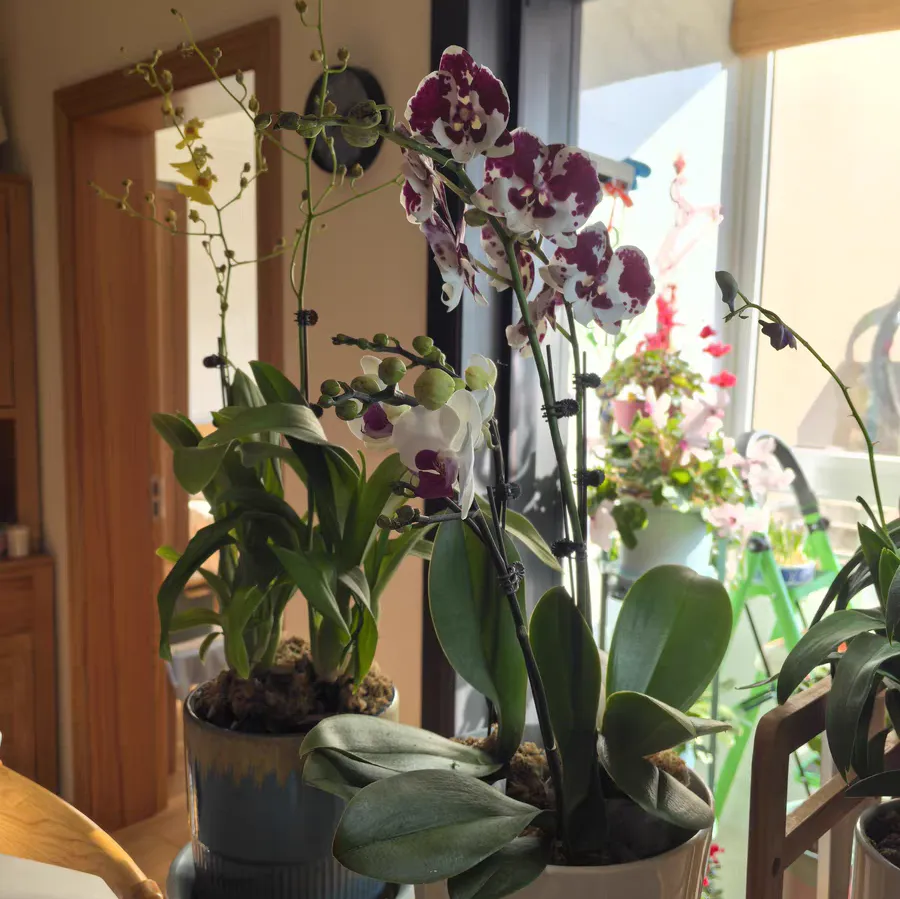In the process of cultivating Phalaenopsis, people are often confused about the issues of watering and fertilizing, especially the role of rainwater. So, can rainwater be used to replace fertilizer for Phalaenopsis? Which method is better, watering with rainwater or letting it rain directly on the plant?
During the process of falling, rainwater can dissolve some trace elements and minerals in the air, such as sodium, magnesium, zinc, and iron, which are all nutrient components required for the growth of Phalaenopsis. Therefore, to a certain extent, rainwater can indeed provide the necessary nutrients for Phalaenopsis.
Advantages of watering with rainwater
Rich in nutrients: As mentioned above, rainwater contains rich trace elements and minerals, which are very beneficial to the growth of Phalaenopsis.
Natural watering: The way of watering with rainwater is closer to nature and helps the natural growth and respiration of Phalaenopsis.
Environment - friendly and economical: Using rainwater to water flowers can save water resources and reduce the maintenance cost.
Limitations of watering with rainwater
Uneven nutrient content: The content and types of nutrients in rainwater are affected by many factors such as region, season, and weather, so it cannot ensure that balanced nutrients are provided for Phalaenopsis every time.
May carry germs: Bacteria and insect eggs in the air may fall on plants with rainwater, and long - term accumulation may lead to the occurrence of plant diseases and pests.
Although rainwater can provide certain nutrients for Phalaenopsis, due to the problems of uneven nutrient content and possible germ - carrying, it cannot completely replace fertilizers. In the process of cultivating Phalaenopsis, special fertilizers should be used in combination to ensure the healthy growth of plants.
Which is better for Phalaenopsis, watering with rainwater or letting it rain directly on the plant?
Advantages of watering with rainwater:
Easy to control: In the room or greenhouse, after collecting rainwater in a container, it is convenient to control the amount and frequency of watering to avoid excessive or insufficient water absorption by plants.
Reduce diseases: Watering flowers with rainwater collected in a container indoors can reduce the invasion of diseases and pests that plants may suffer from when directly exposed to the outdoor environment.
Advantages of letting it rain directly on the plant:
Natural breathing: Letting it rain directly on the plant can make Phalaenopsis closer to the natural state and help it carry out normal physiological activities and respiration.
Natural scouring: Rainwater can wash away the dust and pollutants on the plant surface, keeping the leaves clean and the photosynthesis efficiency high.
Precautions
Appropriate amount of rain: Although letting it rain directly on the plant has certain benefits for Phalaenopsis, excessive rain may lead to waterlogging in the soil, affecting the root respiration of plants and even causing root rot. Therefore, the amount of rain should be controlled appropriately.
Management after rain: After the rain, the state of the plant should be checked in a timely manner. If necessary, drainage and ventilation measures can be taken to avoid the occurrence of diseases.
Both watering with rainwater and letting it rain directly on the plant have their respective advantages and precautions. In practical operations, the choice should be made flexibly according to the growth state of Phalaenopsis and the maintenance environment. When conditions permit, Phalaenopsis can be allowed to get an appropriate amount of rain to enjoy the gifts of nature, but at the same time, attention should be paid to doing a good job in post - rain management.
In the process of cultivating Phalaenopsis, rainwater can be used in an appropriate amount to water the flowers to provide nutrients and maintain a natural state, but it cannot completely replace fertilizers. At the same time, when letting it rain directly on the plant, attention should be paid to appropriate control and post - rain management. Only by considering various factors comprehensively can the healthy growth and beautiful bloom of Phalaenopsis be ensured.
Can rainwater replace fertilizer for Phalaenopsis?

Share with
Tagged in :




Leave a Reply